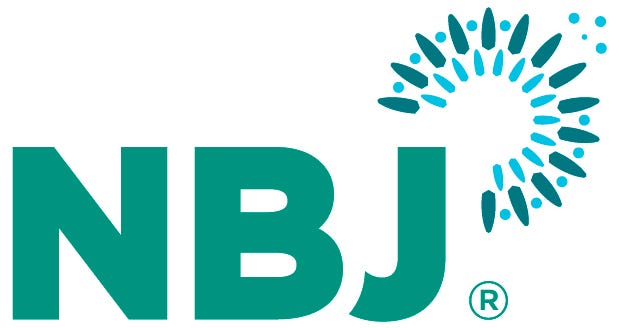
Direct-to-consumer, and multi-level marketing in particular, have long been the space where new ingredients and innovation get their first test drive. The high-touch multi-level marketing model can be ideal for introducing new concepts and online direct offers a good runway where the costs of error may not be so high.
But before a new ingredient or product concept can get a test dive in the not-too-deep end of the supplement marketing pool, the innovation happens first in the ingredient supply world. With that close connection, ingredient suppliers often get a first glimpse of what’s coming next. To share that up-close view, we asked several ingredient supply companies the same set of questions.
This is some of what they’re seeing from their direct view of direct-to-consumer.
NBJ: Is the DTC part of your business growing or slowing?
Matt Phillips, Chief Commercial Officer, Nutegrity: The DTC part of our business is growing. It’s interesting to see the breakdown of traditional channels and the creation of new channels. People’s shopping habits are changing. Amazon is impacting supply chains and developing unique ways for consumer’s to get products. As Amazon continues to gather intelligence by selling multiple brands of healthy living products, it would seem that they would jump into the category with their own competing brands at some point. Additionally, it seems that some of the upstart MLM companies are focused on building web-based platforms which are more focused on selling product than recruiting distributors. These sites and MLM brands become a lifestyle brand for the customers that buy their products.
George Pontiakos, President/CEO, BI Nutraceuticals: I see the consumers sworldwide under a tremendous amount of pressure. In China where BI is located over 60% of businesses have closed. In the United States, the unemployment situation is more dire than the government numbers, impacting consumers’s ability to spend. Europe and the emerging markets are stagnant. I have a negative bias vis-à-vis global growth for next year. I just do not see any market—DTC/Retail/Specialty having the legacy growth we are used to.
Anne van Gastel Business Director, Human Nutrition, BASF Nutrition & Health: This part of our business is growing for two main reasons: our quality ingredients and our ability to provide consumer friendlier delivery formats. In addition to just supplying ingredients, BASF provides scientific support for those at DTC companies, sometimes called “health and fitness coaches,” to help them educate their customers on the product’s health benefits and beyond. As consumer demand grows for natural ingredients, we explain how ingredients are derived from nature.
NBJ: Are you attempting to grow the DTC part of your business? If so, how?
Mark LeDoux, CEO, Natural Alternatives International: We are focusing on developing products with strong IP and serious science, and then taking those to the appropriate channels. In some cases DTC is mission critical. We are working on a DTC channel that is all high-end involving medical doctors and clinics who want the certifications that NAI provides, and the comfort of 35 years of experience.
Phillips: We are focused on growing this category and believe that our Omega 3s, Dairy Proteins and Nutraceuticals are resonating with this channel. Our menhaden fish oil products are sourced from the Atlantic Ocean by our boats, refined in Reedville, VA and concentrated in Batavia, IL. Our customers can visit our plant in Reedville and see the fish coming in that will end up in their softgels.
Pontiakos: BI is focused on growing our business by focusing on providing Clean Label raw materials, Identilok identity technology coupled with DNA raw testing and new plant-based proteins.
NBJ: Is there a specific category of ingredient (energy, cognitive, digestion, weight loss etc.) that is growing in direct?
Santiago Vega, Senior Manager,
Nutrition Marketing, Ingredion Incorporated: We see increasing consumer interest and market in two key areas: long lasting energy and gastrointestinal (GI) health. In the first case, consumers are learning more about the benefits of managing their blood sugar to reduce the risk of serious conditions like diabetes and pre-diabetes. Importantly, they are also learning about how blood sugar management impacts their energy balance through the day and even their weight. Consumers are starting to understand that a proper balance of healthy carbohydrates, fiber and protein can help them achieve and maintain healthy blood sugar levels, which results in steady energy through the day, reduced feelings of hunger and cravings, and eventually weight maintenance or reduction. Our proprietary consumer research shows increasing consumer demand for protein, especially of vegetable origin, healthy carbohydrates, such as resistant starch or whole grains, and fibers to meet their needs for long lasting energy. Regarding GI health, consumers, especially millennials, seem to be very aware of and interested in the idea that maintaining a healthy gut may have a significant impact on overall health by supporting the immune system and even affecting weight and other conditions that were previously not considered related. As a result of this interest, we are seeing rapid growth in consumer awareness and interest in probiotics and prebiotics. Consumers are starting to understand that both probiotics and prebiotics are needed to maintain and promote a healthy microflora.
Steve Peirce, President, Ribus: Digestion is a rapidly growing category with many different probiotics and prebiotics. I am seeing time release products, different releases for different locations in the digestive system and additional delivery systems.
NBJ: DTC companies are known for pioneering new products. Is that still true? Is it changing?
Pontiakos: We see our DTC customer segment as very much the cutting edge when it comes to new products and applications. The entire segment does an excellent job of bringing new products to the consumer.
Michael Jeffers, President, Helios Corp.: From our perspective and experience DTC companies are slow to embrace innovation as the cost to explain and educate the consumer is expensive. It looks like it is easier and initially more economical to follow technologies into retail where the brands have been around for multiple years, which is supposed to provide more visibility and recognition by the consumer.
LeDoux: I think DTC has bifurcated somewhat. By that I mean that there are two channels that I see emerging. The first is all price driven. The second is more science and efficacy driven. Both have different target demographics for their audience. I think the price-driven value channel is suffering from a lack of conviction by the consumers there, but that is based solely on anecdotal evidence.
Phillips: The DTC companies continue to develop pioneering categories. However the overall regulatory environment and the focus on knowing your supply chain may have slowed down the product development aggressiveness, where they are more focused with less potentially controversial product, such as probiotics, proteins and omegas, where the science is established.
van Gastel: DTC companies are, indeed, known for pioneering new products. They are close to consumers. There’s no question that form and function will drive demand for dietary supplements in this channel. Of all supplement users, we know that about 30 percent do not comply with their nutrient regimen because it’s not convenient or they find traditional pills and capsules difficult to swallow. BASF’s new PronovaPureTM ultra-high omega-3 provides health benefits and is perfect for small, easy-to-swallow softgels. We help customers create formulations with Tonalin® CLA in chews for sports enthusiasts, powders for body-builders and meal-replacement beverages for busy consumers on-the-go. DTC brand owners can formulate a variety of vitamins and ingredients in melts using LudiflashR, a co-processed excipient which enables the tablet to dissolve on the tongue within seconds. Especially for seniors finding it difficult to swallow pills, emulsions are easy-to-take with sensory appeal in flexible dosage forms.
NBJ: MLM companies are undoubtedly eyeing the personalized nutrition concept. Are you seeing anything that would suggest they are finding traction?
LeDoux: Personalizing nutrition is an exceedingly ambitious undertaking. MLM companies historically have generated excitement through breakthrough technologies or products that involve special components or processes that are often patented or patent pending. Doing high volumes in the “personal” space defies logic in my mind because that is probably more suitable in a clinical setting where blood test results or genotyping can be overseen by competent clinicians with suitable training and experience. Trying to transfer that model to the layman is a concept fraught with peril.
Phillips: Personalized nutrition means different things to different DTC companies. The DTC channel is leading the concept because it is a natural channel with one-to-one discussions. The challenges for personal nutrition comes when you are trying to customize products based on individual health profiles vs. manufacturing costs spread out over volumes. Some of the questions that still need to be answered are what parts of personalized nutrition can you break into customized pieces and how do you manage the manufacturing and customization from an operations perspective—two competing areas that ultimately have different responsibilities.
NBJ: Do you see a difference in what internet channel companies are developing vs. MLM? Is that changing?
Phillips: The lines are starting to blur. Although, the internet and MLM channels are very different, they are starting to cross over. As stated above, new MLMs are starting their models on the internet and focusing on products that resonate and product exclusivity, while the primary internet site is focused on selling volumes of product whether it be their own brand or others at value prices. Different channels, different pricing structures, but ultimately competing at some level for customers.
LeDoux: Internet channel companies seem to be the fastest to market with new technologies, platforms and ingredients. I attribute that to barrier-to-entry costs being low and a greater capacity of marketers to frame messaging to target demographics electronically. Having said that, the FTC and FDA are turning up the heat on Internet participants that they believe to be scams, and the number of cases involving seizure, fines and incarceration potential are sure to rise. The cessation of operations of Vemma is also a shot across the bow of companies that misplace priorities in the MLM space. Different regions of the world are more comfortable with MLM or direct sales than others, and in those arenas we see continued growth of product sales that are of verifiable quality.
Pontiakos: There is, of late, somewhat of an overlap between the internet channel and the MLM space. However I see the MLM segment as doing a much better job of customer retention.
Jeffers: In our experience internet sellers tend to follow trends vs. create trends. If an internet seller has to create trends, the cost of media to do so might make the product less competitive compared to older technologies in the same space. Thus we notice the emphasis falls to unique packaging or unique combinations that differentiate from the other internet sellers. Innovation is a tough sell and in general needs to be in the public eye for many years before the online seller will take a chance on the innovation story.
NBJ: Do you have a prediction on the next hot ingredient or category for DTC in supplements?
Van Gastel: If quality and transparency were a category, that would be our prediction for what will be hot in the future. The bottom line is consumers want to know that what is on the label is in the product. It’s as simple as that and we will continue to work hard to deliver the quality ingredients consumers demand.
LeDoux: Products like NIAGEN/Nicotinamide Riboside (from Chromadex); water soluble forms of Curcumin extracts; bona fide extracts of fish and krill oils for cardiovascular health; phosphatidylserine and related compounds for mental function; antibiotic replenishment supplements, (helping restore friendly flora after the use of antibiotics); performance enhancing nutrients with extraordinary science such as CarnoSyn (beta-Alanine).
Vega: Based on the primary areas of concern for consumers, and with long lasting energy being near the top for most demographic groups, we expect to see many more ingredients being introduced in this category. We see resistant starch breaking through to supplements for DTC, given growing consumer awareness and strong clinical substantiation. We also believe that vegetable proteins, especially from pulses (faba, lentil, pea) will see important growth, given growing consumer awareness, a great sustainability story and strong public health support by the UN, FAO and other organizations.
About the Author
You May Also Like






